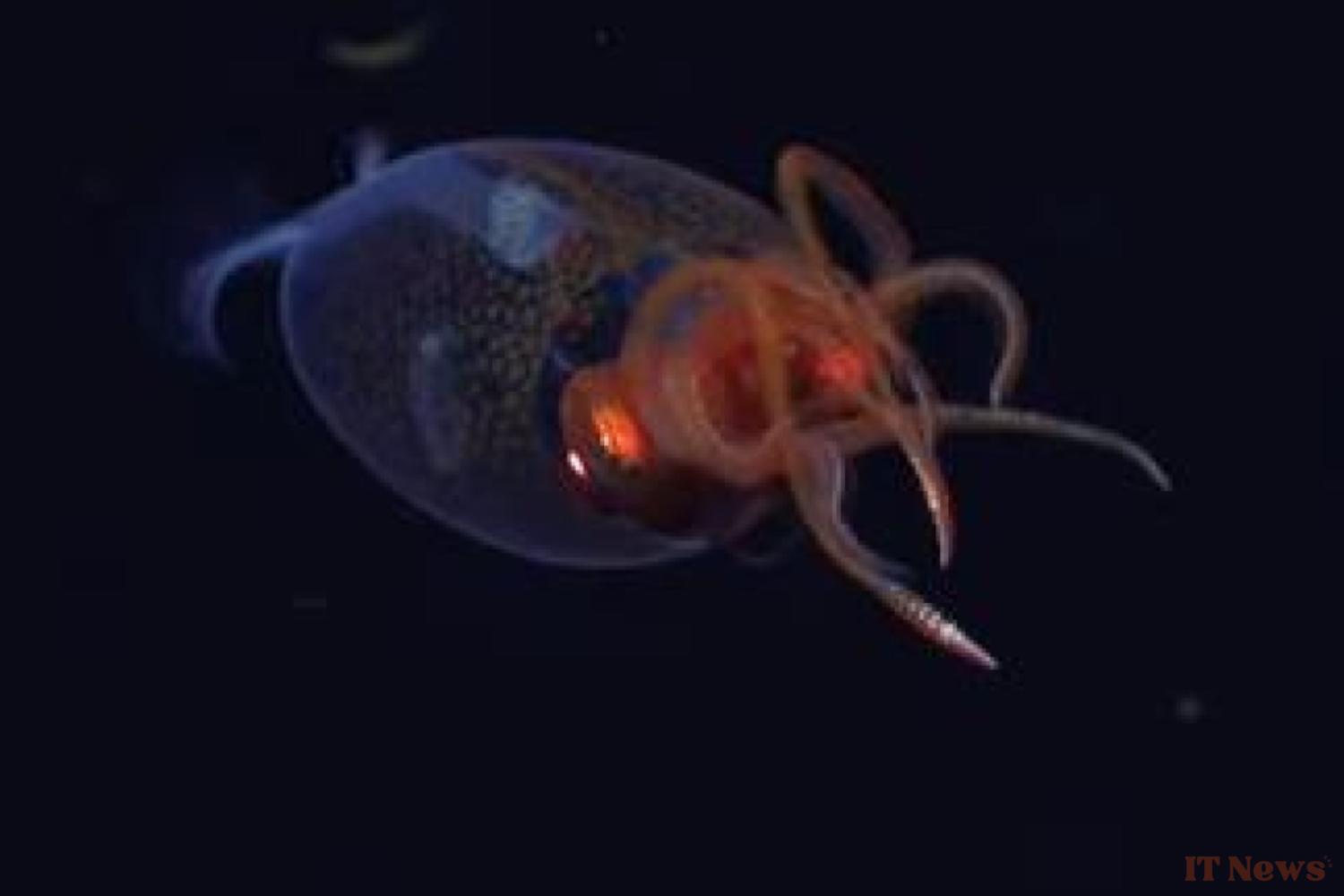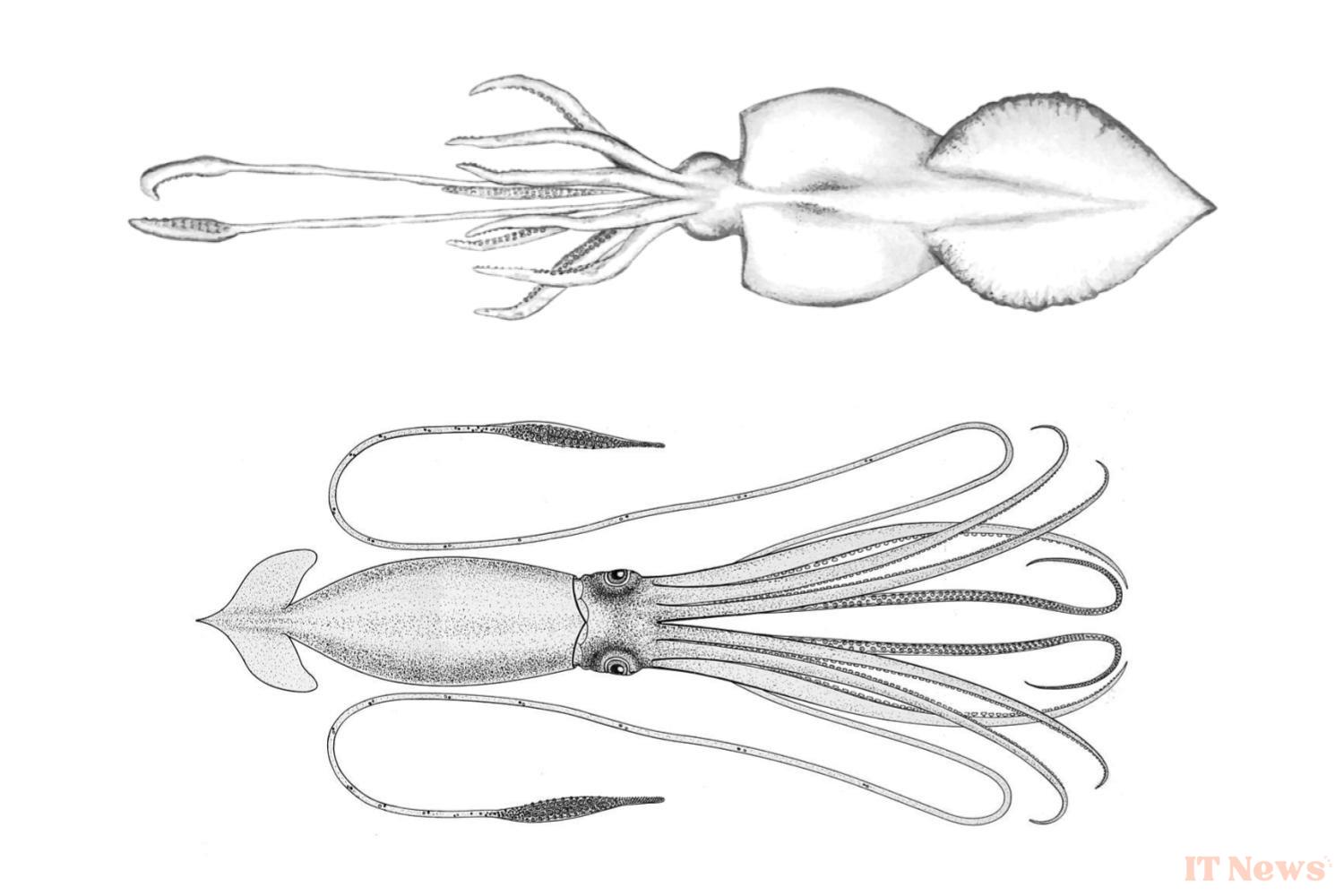A team of researchers has just accomplished a unique feat in the field of marine biology: for the first time ever, they have managed to capture a video of a colossal squid living in its natural habitat. Long considered one of the oceans' most elusive creatures, this legendary cephalopod was previously only documented through dead specimens hauled up by fishing boats. These new images offer a unique insight into the life of one of the planet's most mysterious animals.
You've probably already heard of the famous giant squid, aka Architeuthis dux. This creature arouses a certain fascination, so much so that it has made many memorable appearances in famous works of fiction. The most famous example is undoubtedly the essential Twenty Thousand Leagues Under the Sea by Jules Verne, where the crew of the Nautilus is forced to defend itself against the assault of a giant squid in an epic battle.
A very discreet mastodon
But you may not know that there is another species of squid even more massive than this one: the colossal squid, or Mesonychoteuthis hamiltoni for short. This is the largest known invertebrate; researchers estimate that it can weigh more than 500 kg, about as much as an old Fiat 500!
Unfortunately, everything we know about this animal is based on the study of dead specimens, found in the stomachs of sperm whales or in trawler nets. No living specimen has ever been observed living in its natural habitat, and for good reason: they are true escape artists.
“Not only do these animals live in a huge, very dark environment, but it’s also likely that they actively avoid us,” explains Kat Bolstad, a marine biologist at the University of Auckland, in a post published on The Conversation. “The squid that are most adept at avoiding predators have been passing on their genes for millions of years. The result is a current population of animals with acute vision, conditioned to flee from light," she explains.
A world first
But during their latest expedition, Bolstad's team finally got there: this Tuesday, the group announced that they had finally managed to capture the very first images of this behemoth, almost 100 years to the day after the first formal description.
These exceptional images, captured by a scientific submersible called SuBastian during an expedition near the Sandwich Islands, allow us to appreciate the anatomical differences between the giant squid and the colossal squid.
The former are rather thin and elongated, with relatively sparse musculature and a small fin. The latter, on the other hand, is much stockier and has a much larger fin, with overall shorter and thicker tentacles. The two longest are equipped with extremely sharp swivel hooks, which dig deeper and deeper into the prey's flesh as it struggles. And it was precisely thanks to the presence of these appendages that the researchers realized what they were dealing with. “When I saw the fangs, I started hyperventilating,” said Aaron Evans, one of the experts who formally identified the animal.
The video also reveals another distinctive feature of this species: its huge iridescent eyeballs, essential for spotting prey in the darkness of the abyss. In adults, they can reach a size larger than a standard football, making them the largest eyes in the entire known animal kingdom.
Ultimately, this first observation of a living colossal squid represents a major advance in our understanding of the abyssal world. It not only confirms the existence of previously assumed behaviors and morphological characteristics, but also paves the way for new research on an ecosystem that remains largely unknown.
At a time when humanity has mapped the surface of Mars more precisely than the seabed of its own planet, this discovery is a reminder of how the oceans still hold many fascinating mysteries. And it's an excellent reason to continue following the work of marine biologists, whose discoveries certainly continue to amaze us.




0 Comments